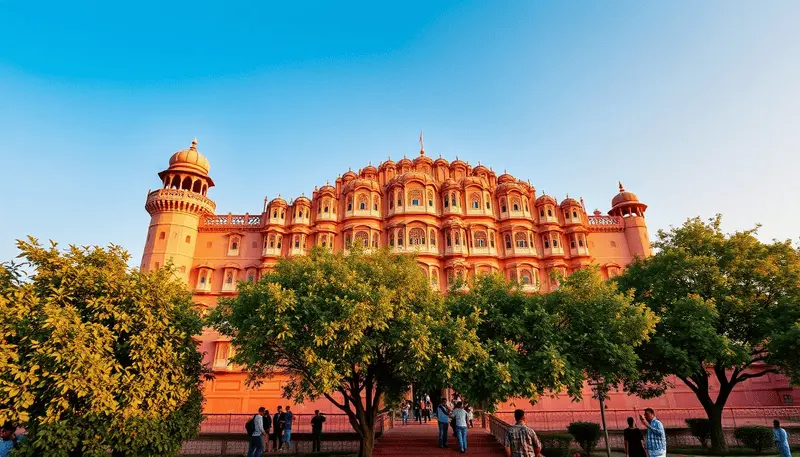Timgad, an ancient Roman city in Algeria, stands as one of the best-preserved Roman ruins in the world. Located in the North African country of Algeria, Timgad tells the story of how the Roman Empire spread its influence far beyond Europe. It gives us a glimpse into what life was like more than 2,000 years ago. The city was founded by the Roman Emperor Trajan around 100 AD and is now a UNESCO World Heritage site. This article will explore the history of Timgad, its famous buildings and ruins, its significance in today’s world, and how you can visit it. Using very simple language and easy words, let’s dive into the fascinating world of Timgad.
Introduction to Timgad
Timgad, originally known as Thamugadi, is located in modern-day Algeria in North Africa. The Romans built it as a military colony, which means it was a city where soldiers and their families lived. They designed the city in a grid pattern, a common style for Roman cities. The streets crossed each other at right angles, forming squares.
Timgad was more than just a military base. It had markets, temples, public baths, and even a theater. For many years, the city thrived as a bustling hub of activity, filled with people working, trading, and enjoying entertainment. However, after the fall of the Roman Empire, people abandoned Timgad, and it remained hidden under the sand for centuries. In the 19th century, explorers rediscovered it, and since then, it has become one of the most important Roman ruins in the world.

History of Timgad Algeria
The Roman Emperor Trajan founded Timgad around 100 AD. He built the city in honor of his soldiers to show Roman power in North Africa. People mainly used it as a place for retired Roman soldiers and their families. These soldiers had served in the Roman army for many years, and the empire rewarded them with land and homes in this new city. Additionally, Timgad served as a way to protect the Roman Empire’s borders in North Africa. At that time, the Romans controlled a large part of North Africa, and cities like Timgad helped them keep control over the area.
The city was built in a grid pattern, which was a very organized way of designing cities during Roman times. There were straight streets that crossed each other at right angles, making the city look like a checkerboard. This made it easy for people to find their way around. In the middle of the city, there was a large open area called the forum, which was the center of public life. This is where people gathered to discuss politics, trade goods, and socialize. Have you Learned about Albania’s Stone City ?
During its peak, Timgad was home to around 15,000 people. It had all the features of a typical Roman city, including temples, public baths, a library, and a large theater. The city also had an advanced water system, with aqueducts bringing fresh water from nearby sources. However, after the fall of the Roman Empire, the city’s population began to decline. By the 7th century, People completely abandoned Timgad, and it eventually got covered by sand from the Sahara Desert.
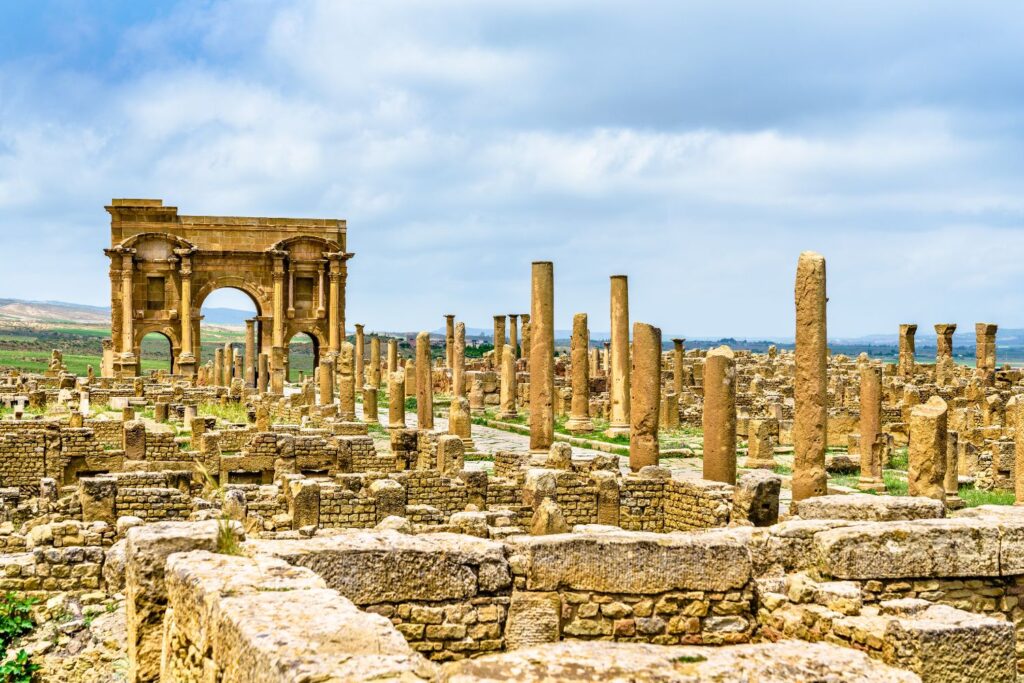
Famous Buildings and Ruins of Timgad
One of the reasons why Timgad is so famous today is because of how well-preserved its buildings and ruins are. Walking through the ruins of Timgad is like stepping back in time to the days of the Roman Empire. Here are some of the most important structures you can see in Timgad:
1. The Theater
The theater in Timgad stands as one of the most impressive structures in the city. It was built to hold about 3,500 people and served as a venue for public performances, including plays, music, and speeches. Roman theaters played a big role in their culture, so they often built them in cities to provide entertainment for the people. The theater in Timgad is still in good condition, and visitors can sit in the seats and imagine what it must have been like to watch a play there. Also Learn about the Acient Quebrada Dehumahuaca.
2. The Forum
The forum was the heart of Timgad. It was an open space where people gathered for public events, markets, and socializing. The forum surrounded itself with important buildings, including temples and government offices. Here, the city’s leaders met to discuss important matters, and people came to shop for goods. Additionally, this area served as a central hub for both governance and trade.
3. The Arch of Trajan
The Arch of Trajan is one of the most famous landmarks in Timgad. It was built to honor Emperor Trajan, the founder of the city. The arch is about 12 meters tall and still stands today. It is a great example of Roman architecture and shows the skill of the builders who constructed it more than 2,000 years ago.
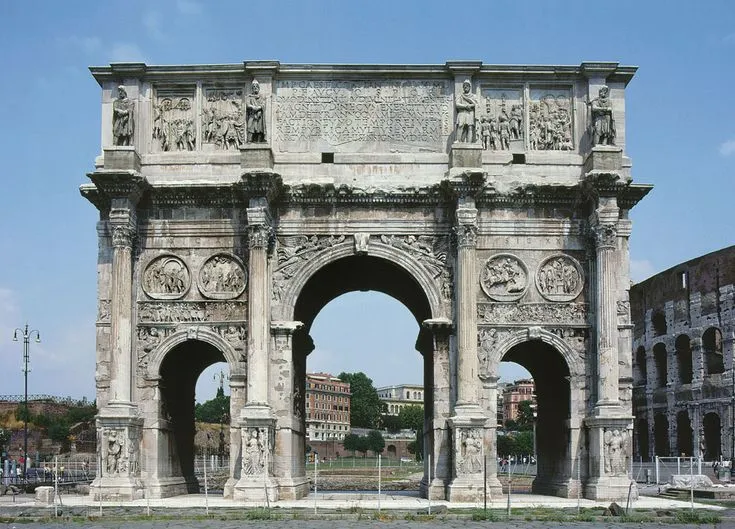
4. Public Baths
Public baths were a very important part of Roman life. They were not just places to get clean, but also places where people could relax, exercise, and socialize. The baths in Timgad were large and had separate rooms for hot, warm, and cold baths. There were also areas for exercise and massages. Even today, visitors can see the remains of these baths and imagine what it must have been like to spend time there.
5. The Library
Timgad featured a public library, which showed how advanced the city was. Additionally, the library served as a place where people could read and study. Scholars filled it with scrolls and books, making it an important center of knowledge.
6. Temples
Timgad had several temples, and the most important one was dedicated to Jupiter, the king of the Roman gods. Roman religion played a big role in daily life, so people built temples to honor their gods and goddesses. The remains of these temples still stand today and give us an idea of how important religion was to the people of Timgad.
Why Timgad is Important
Timgad is important for several reasons. First, it is one of the best examples of a Roman city outside of Italy. The well-preserved ruins clearly show how the Romans built their cities. As you walk through Timgad, you can easily see how they organized the streets, built the buildings, and lived their daily lives. The city is a great example of Roman engineering and urban planning. It is as same as Coliseum Greece.
Second, Timgad is important because it shows the influence of the Roman Empire in North Africa. The Romans were able to spread their culture, architecture, and way of life far beyond Europe. Timgad is a reminder of how powerful the Roman Empire was and how it shaped the world we live in today.
Finally, Timgad is important because it is a UNESCO World Heritage site. In 1982, UNESCO actively recognized Timgad by adding it to their list of important historical sites. They did this because the city is well-preserved and, moreover, holds significant importance in Roman history. Timgad holds protection as a valuable part of human history, and people actively work to preserve it for future generations. Additionally, these efforts ensure that the city’s rich history remains intact.
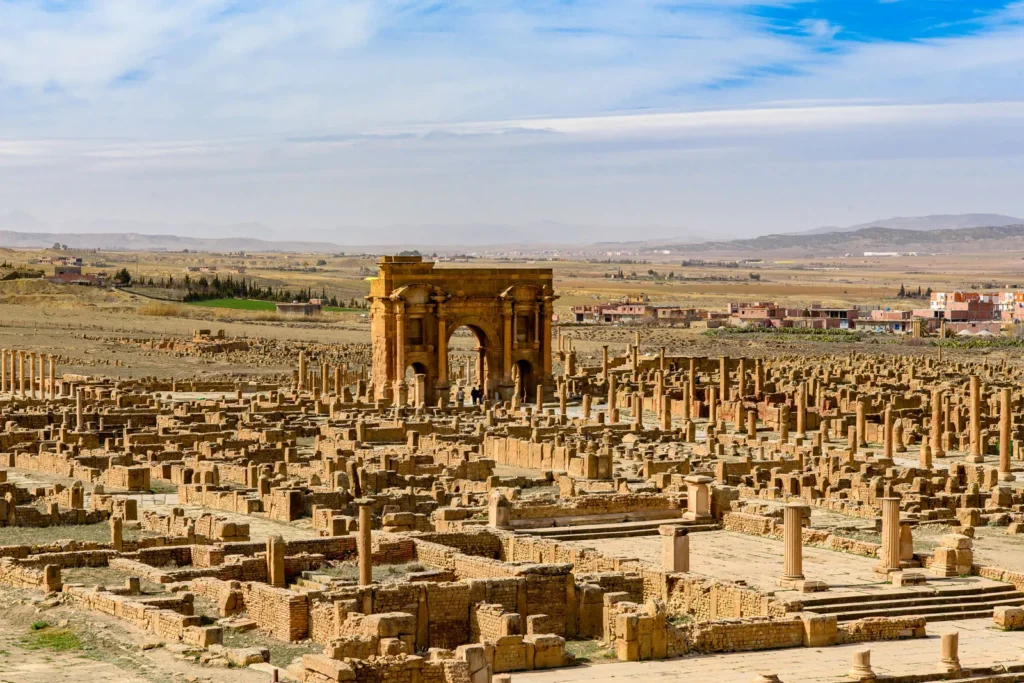
Visiting Timgad Today As a Tourist
If you ever visit Algeria, Timgad is a place you should not miss. It is located about 35 kilometers from the town of Batna, in the Aures Mountains. Getting to Timgad is easy by car or bus, and there are tours available for visitors who want to learn more about the city’s history.
The best time to visit Timgad is during the cooler months, from October to April, when the weather is more comfortable for exploring the ruins. The site is open to visitors, and there are pathways that take you to all the main attractions, including the theater, the Arch of Trajan, and the public baths. It’s a good idea to wear comfortable shoes because you will be doing a lot of walking. There are also local guides available who can tell you more about the history of Timgad and show you the best spots to visit. Some guides speak English, making it easier for international visitors to understand the history of the city. Learn about the Beauty of Benghazi.
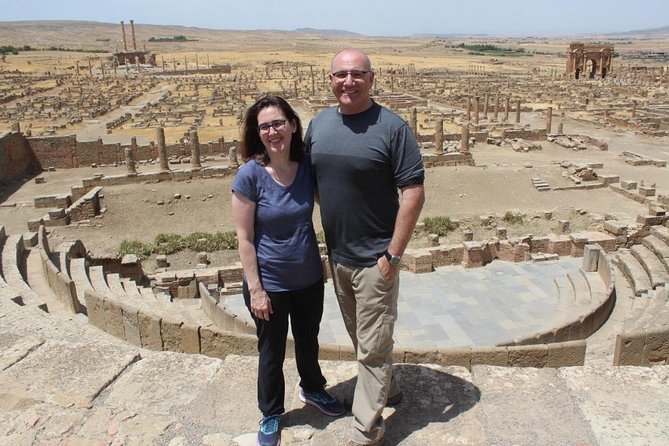
In addition to the ruins, there are a few nearby attractions that are worth visiting. The Aures Mountains offer beautiful views and are a great place for hiking. There are also small towns nearby where you can experience traditional Algerian culture and try local food. For visitors who want to learn more about Timgad, there is a small museum near the entrance to the site. The museum has displays of artifacts found in Timgad, including pottery, tools, and statues. It’s a great way to get a deeper understanding of the city and its history.
Conclusion
Timgad is one of the most incredible ancient Roman cities in the world. Located in Algeria, this well-preserved city offers a unique look into the past. From the large theater to the Arch of Trajan, every part of Timgad tells a story of the Roman Empire’s influence in North Africa. If you ever travel to Algeria, make sure to visit Timgad and experience this amazing piece of history for yourself. It’s a journey back in time that you won’t forget!

